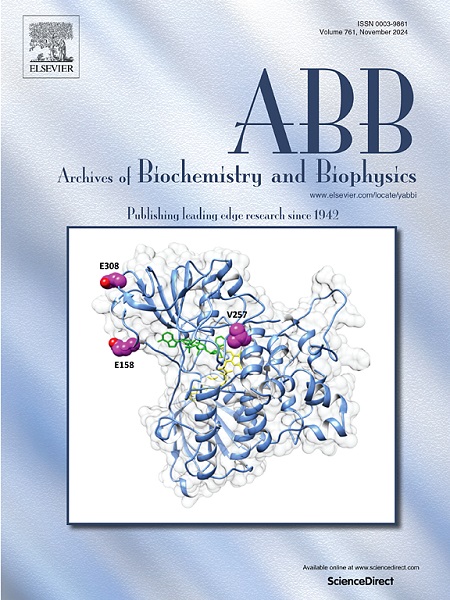NFAT2 promotes sorafenib resistance in hepatocellular carcinoma cells by modulating calcium ion signalling
IF 3.8
3区 生物学
Q2 BIOCHEMISTRY & MOLECULAR BIOLOGY
引用次数: 0
Abstract
Treating hepatocellular carcinoma (HCC) remains challenging due to the drug resistance of HCC cells, which limits the clinical efficacy of sorafenib. This study elucidates the role of nuclear factor activated T cells 2 (NFAT2) in sorafenib resistance in HCC cells and reveals the underlying mechanism. Sorafenib-resistant cell lines were constructed, with NFAT2 overexpressed and knocked down via genetic engineering. Fura-2 detected intracellular calcium ion concentration; transmission electron microscopy (TEM) assessed organelle damage; wound healing and transwell assays evaluated cell migration and invasion; clone formation and CCK8 assays measured cell proliferation. Flow cytometry detected apoptosis; Western blot analyzed protein expressions. Tumorigenesis was evaluated using a sorafenib-resistant HCC orthotopic xenograft mouse model. We found that NFAT2 was upregulated in MHCC97H-SR and HepG2-SR cells. Overexpression of NFAT2 inhibited Ca2+ influx in MHCC97H-SR, reduced the expression of Ca2+ regulation-related proteins (p-PLCγ, p-IP3R, p-CaMKII), ER-related proteins (CPR94, CPR78), and oxidative stress-related proteins (NOX2, NOX4). NFAT2 overexpression inhibited apoptosis and enhanced cell migration, invasion, and proliferation. NFAT2 knockdown reduced tumorigenesis. Our study uncovered a mechanism by which NFAT2 increases HCC cell resistance to sorafenib by altering intracellular calcium ion signals, highlighting NFAT2 as a promising target for HCC drug therapy.

NFAT2通过调节钙离子信号传导促进肝癌细胞索拉非尼耐药
由于肝细胞癌(HCC)细胞的耐药性,治疗肝细胞癌(HCC)仍然具有挑战性,这限制了索拉非尼的临床疗效。本研究阐明了核因子活化T细胞2 (NFAT2)在HCC细胞索拉非尼耐药中的作用,并揭示了其潜在机制。构建耐索拉非尼细胞系,通过基因工程敲除NFAT2过表达。Fura-2检测细胞内钙离子浓度;透射电镜(TEM)评估细胞器损伤;伤口愈合和transwell试验评估细胞迁移和侵袭;克隆形成和CCK8测定细胞增殖。流式细胞术检测细胞凋亡;Western blot分析蛋白表达。使用索拉非尼耐药肝癌原位异种移植小鼠模型评估肿瘤发生。我们发现NFAT2在MHCC97H-SR和HepG2-SR细胞中表达上调。过表达NFAT2抑制Ca2+内流在MHCC97H-SR中,降低Ca2+调节相关蛋白(p-PLCγ, p-IP3R, p-CaMKII), er相关蛋白(CPR94, CPR78)和氧化应激相关蛋白(NOX2, NOX4)的表达。NFAT2过表达抑制细胞凋亡,增强细胞迁移、侵袭和增殖。NFAT2敲除可减少肿瘤发生。我们的研究揭示了NFAT2通过改变细胞内钙离子信号增加HCC细胞对索拉非尼耐药性的机制,突出了NFAT2作为HCC药物治疗的一个有希望的靶点。
本文章由计算机程序翻译,如有差异,请以英文原文为准。
求助全文
约1分钟内获得全文
求助全文
来源期刊

Archives of biochemistry and biophysics
生物-生化与分子生物学
CiteScore
7.40
自引率
0.00%
发文量
245
审稿时长
26 days
期刊介绍:
Archives of Biochemistry and Biophysics publishes quality original articles and reviews in the developing areas of biochemistry and biophysics.
Research Areas Include:
• Enzyme and protein structure, function, regulation. Folding, turnover, and post-translational processing
• Biological oxidations, free radical reactions, redox signaling, oxygenases, P450 reactions
• Signal transduction, receptors, membrane transport, intracellular signals. Cellular and integrated metabolism.
 求助内容:
求助内容: 应助结果提醒方式:
应助结果提醒方式:


